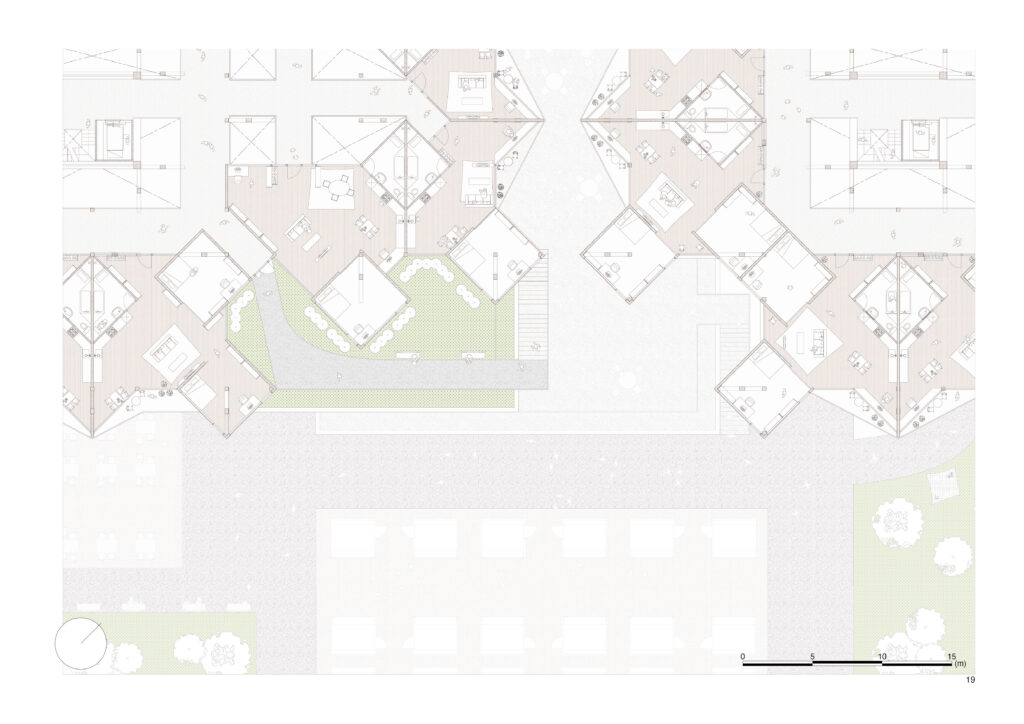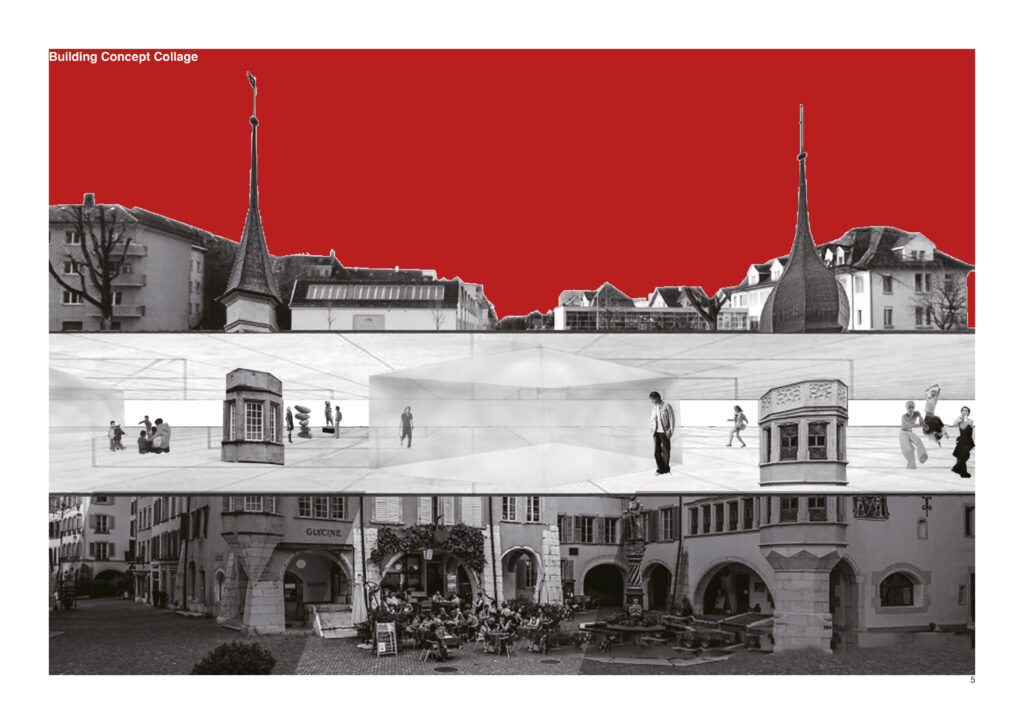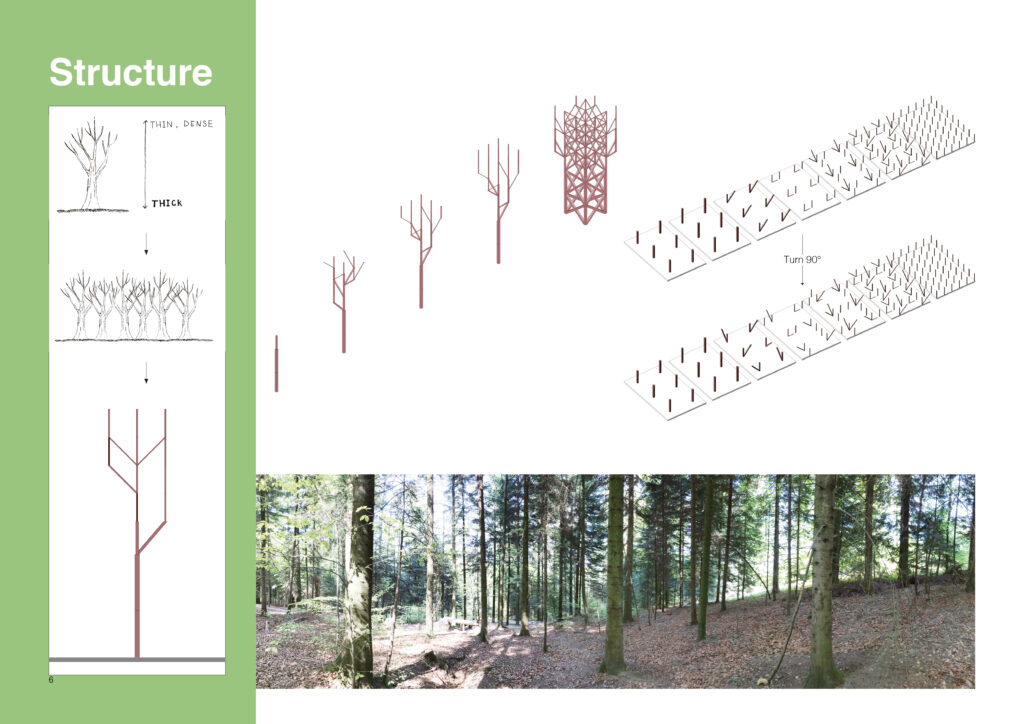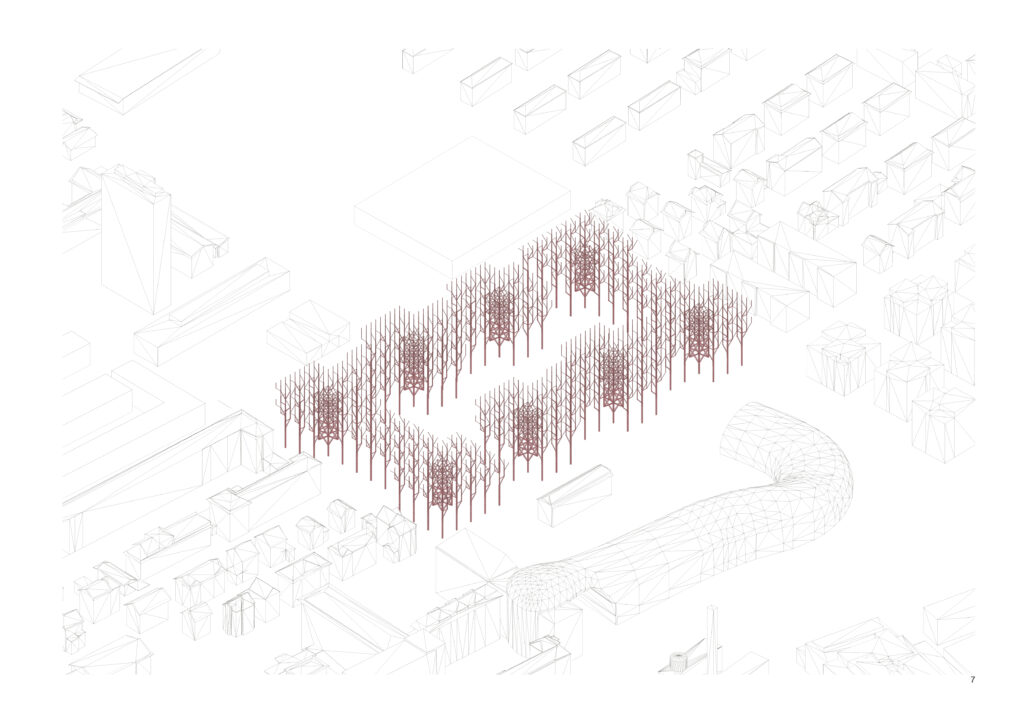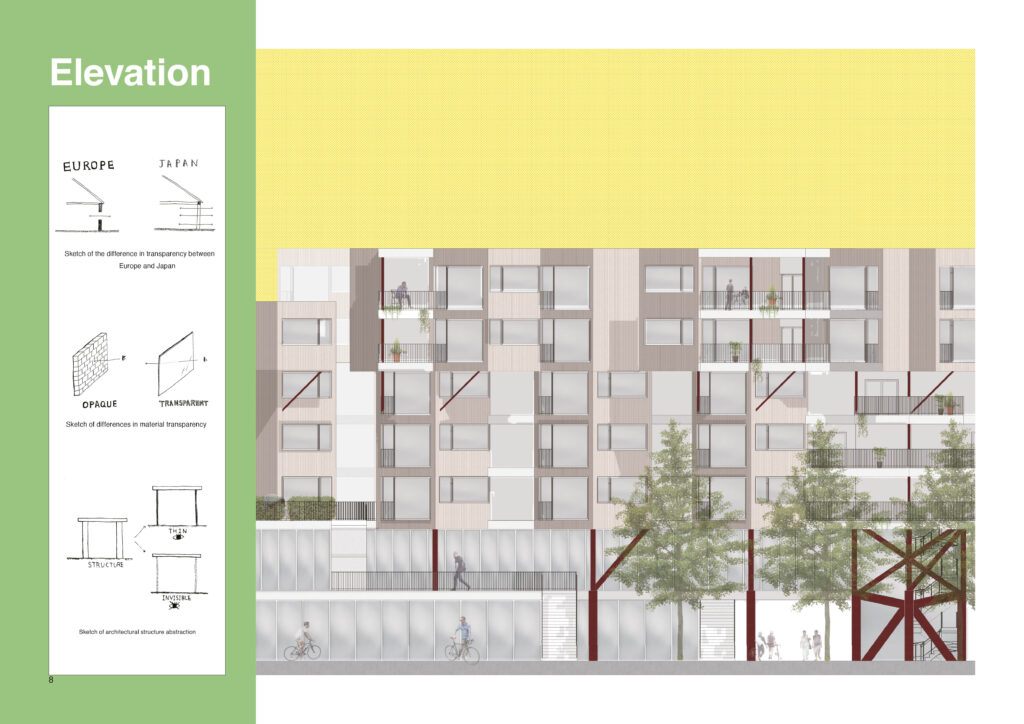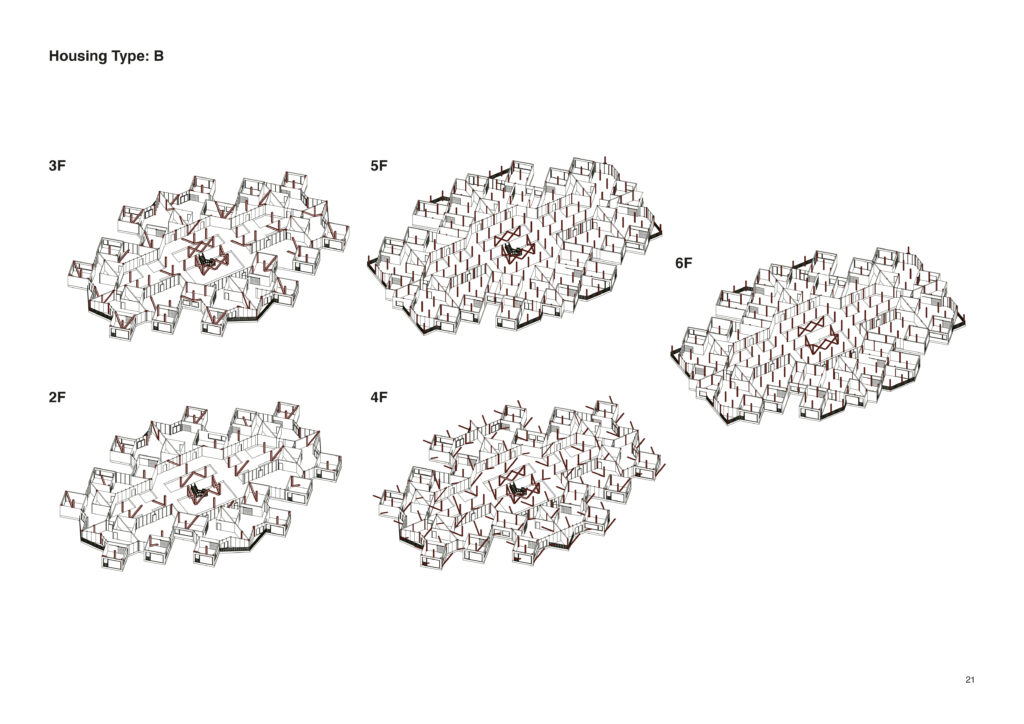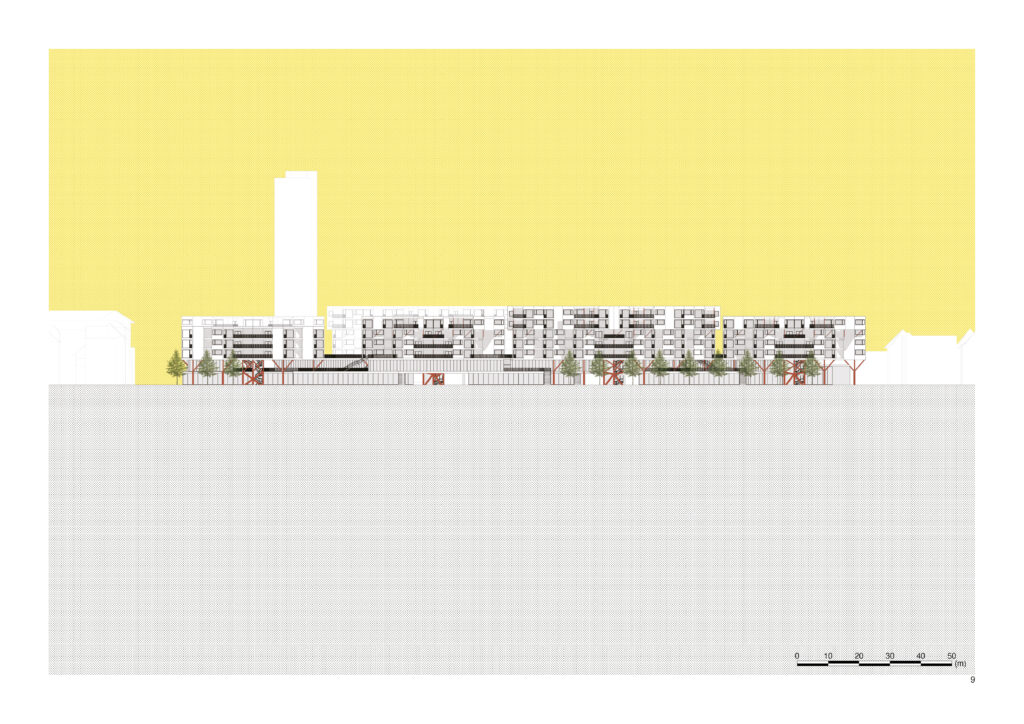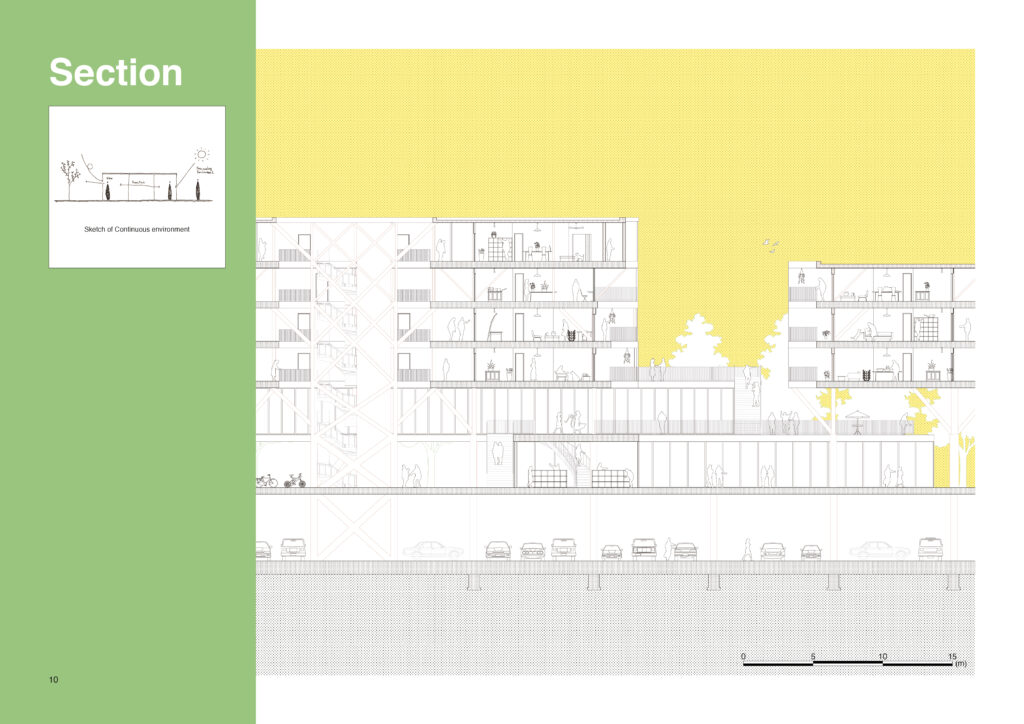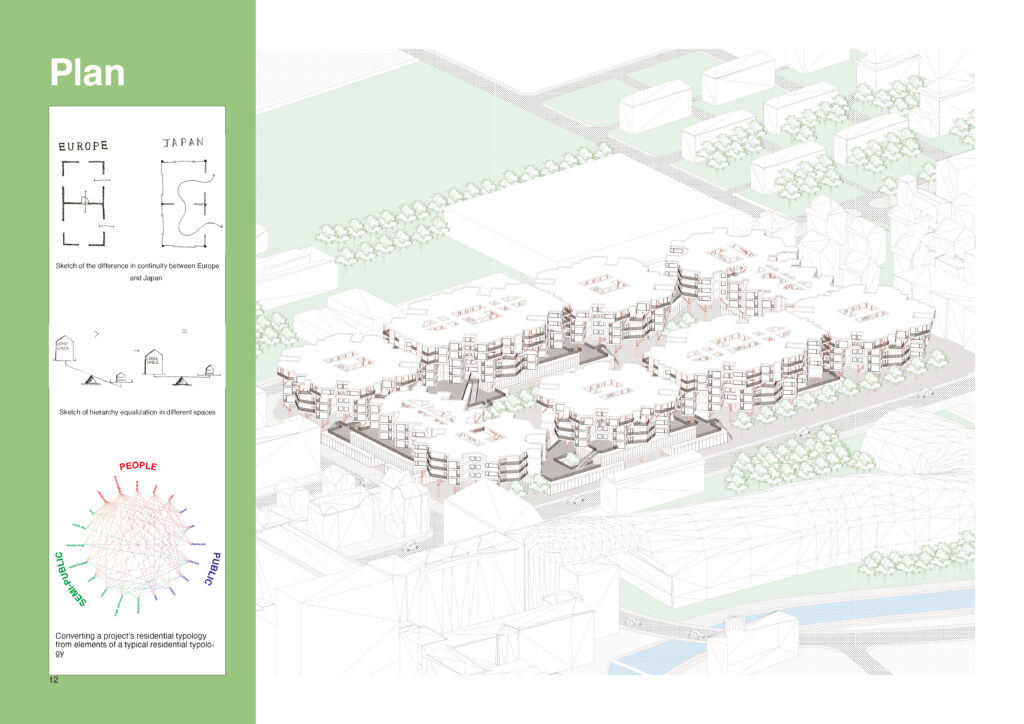From Critical Regionalism to Critical Grobalism – A Personal Appreach from a Japanese Perspective
Takahiko Kameoka

This project uses the methodology of case studies of contemporary buildings by Japanese architects in Europe. It uses a dialectic approach to interpret the influence of Japanese architectural essence, qualities, concepts,… and develop its relationship with the context of Biel, thus clarifying the use of these characters and regionality in architectural design. The design focuses on the forest space when considering the three categorized Japanese essences of transparency, continuity, and non-monumentality. My point of view is, the trees found in the forest/nature are of different types and sizes in the forest, which creates a variety of spaces via the density of trees, branches, and foliages. For example, branches and foliages change the transparency of the space even though the space is naturally continuous between the trees. The forest’s presence is largely due to the trees› density, but the forest does not become an iconic presence; it is non-monumental. Therefore this project attempts to create a new architecture in Biel by harmonizing Japan’s essence, personal perspective, and regionalism characteristic. This project is only particular to that of the context of Biel, and it cannot be copy-pasted elsewhere. However, the design process for this project has the versatility to be used in a more globalized world in the near future.
Study mentors: Felix Wettstein, Ludovica Molo
